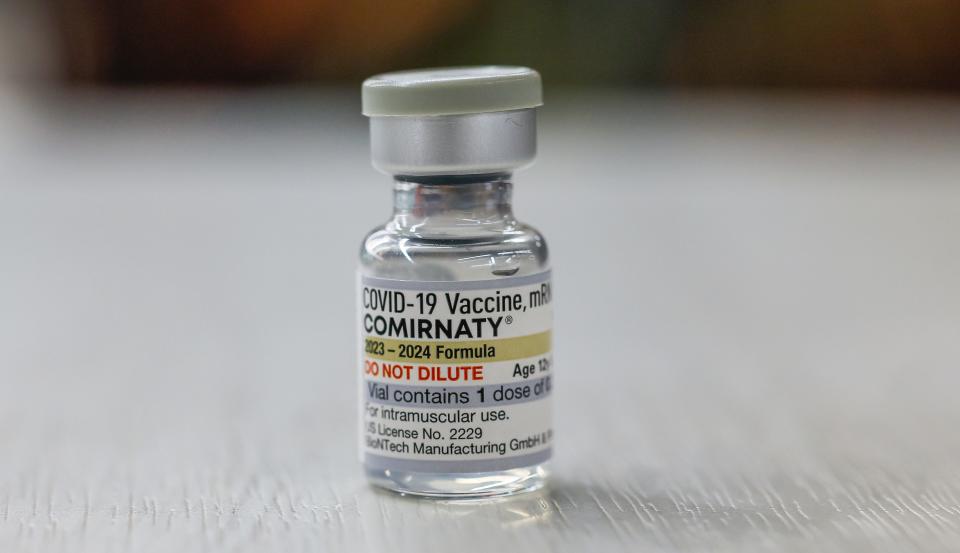This COVID-19 variant was rare. Cases have tripled over two weeks, CDC estimates.
A COVID-19 variant once considered rare has tripled in U.S. cases in the past two weeks, according to the Centers for Disease Control and Prevention.
The mutated strain, called BA.2.86, accounts for nearly one-tenth of circulating viruses, according to projections Monday from the CDC's Nowcast variant tracker. On Nov. 11, the variant made up just 3% of cases. A recent estimate indicates that BA.2.86 makes up 9% of COVID-19 cases, although that is not a firm number. Health officials say the variant likely accounts for 5% to 15% of circulating variants in the U.S.
“The numbers are less important,” Dr. Perry Halkitis, dean of the Rutgers School of Public Health in New Jersey, told USA TODAY. “The pattern is more important. And it looks like it's growing.”
COVID-19 tests available: With cases expected to spike, federal government to send free rapid COVID tests to schools
Testing is considered a less reliable indicator of disease prevalence. But the increase in hospitalizations and deaths from COVID-19 should cause concern, Halkitis said. Colder temperatures in densely populated places such as the New York area may account for increases in the Northeast in recent days, he said.

COVID-19, RSV, flu or a cold? Figuring out what your symptoms mean this fall and winter
The COVID-19 virus, like other viruses, is constantly changing through mutations that make it easier to spread or are resistant to medicines or vaccines.
BA.2.86 comes from the BA.2 lineage, and it’s a subvariant of omicron, which came to dominate cases two years ago. BA.2.86 also has an offshoot, JN.1, but it appears rare for now.
Updated COVID-19 vaccines are expected to increase protection against BA.2.86, the CDC said.
BA.2.86 doesn’t appear to be driving increases in infections or hospitalizations, the CDC said. The CDC and the World Health Organization believe the variant’s risk to public health is low for severe illness compared with other variants. But on Aug. 21, WHO reclassified BA.2.86 as a "variant of interest" amid global increases.
World Health Organization WHO asks China about rise in illnesses, pneumonia clusters. Here's what the agency learned.
CDC data showed the Northeastern region, including New Jersey and New York, saw 13% of cases derived from BA.2.86, the highest figure recorded for the variant.
In a statement, the New York State Department of Health said the BA.2.86 variant has been detected in state wastewater, a tool for COVID-19 surveillance, since late August and has been increasing in proportion over recent months.
New York health officials said BA.2.86 cases are increasing across the state. But they added they anticipated the increase because BA.2.86 reportedly is more transmissible than other circulating variants.
The New Jersey Department of Health has noted increasing numbers of BA.2.86 specimens since mid-October, department spokesperson Dalya Ewais wrote in an email. New Jersey is expected to see similar trends as the CDC's Nowcast estimates for the region, she added. Still, she said, BA.2.86 isn't likely to reach levels of the first COVID-19 outbreak in spring 2020, or the omicron variant.
Health officials from New Jersey and New York encouraged people to stay up to date on COVID-19 vaccines. If symptoms develop, people should get tested and stay home.
Eduardo Cuevas covers health and breaking news for USA TODAY. He can be reached at EMCuevas1@usatoday.com.
This article originally appeared on USA TODAY: COVID-19 variant BA.2.86 triples in occurence, CDC estimates show


